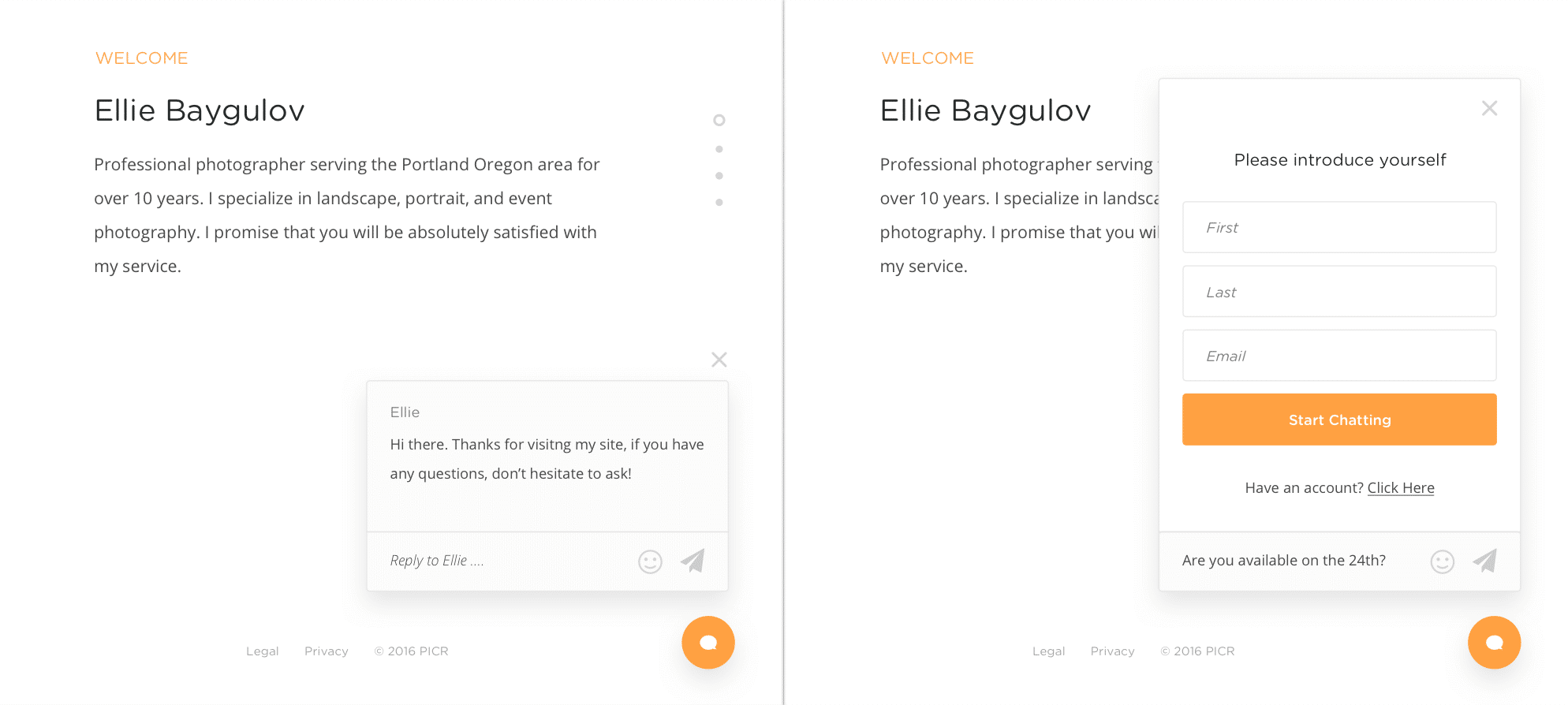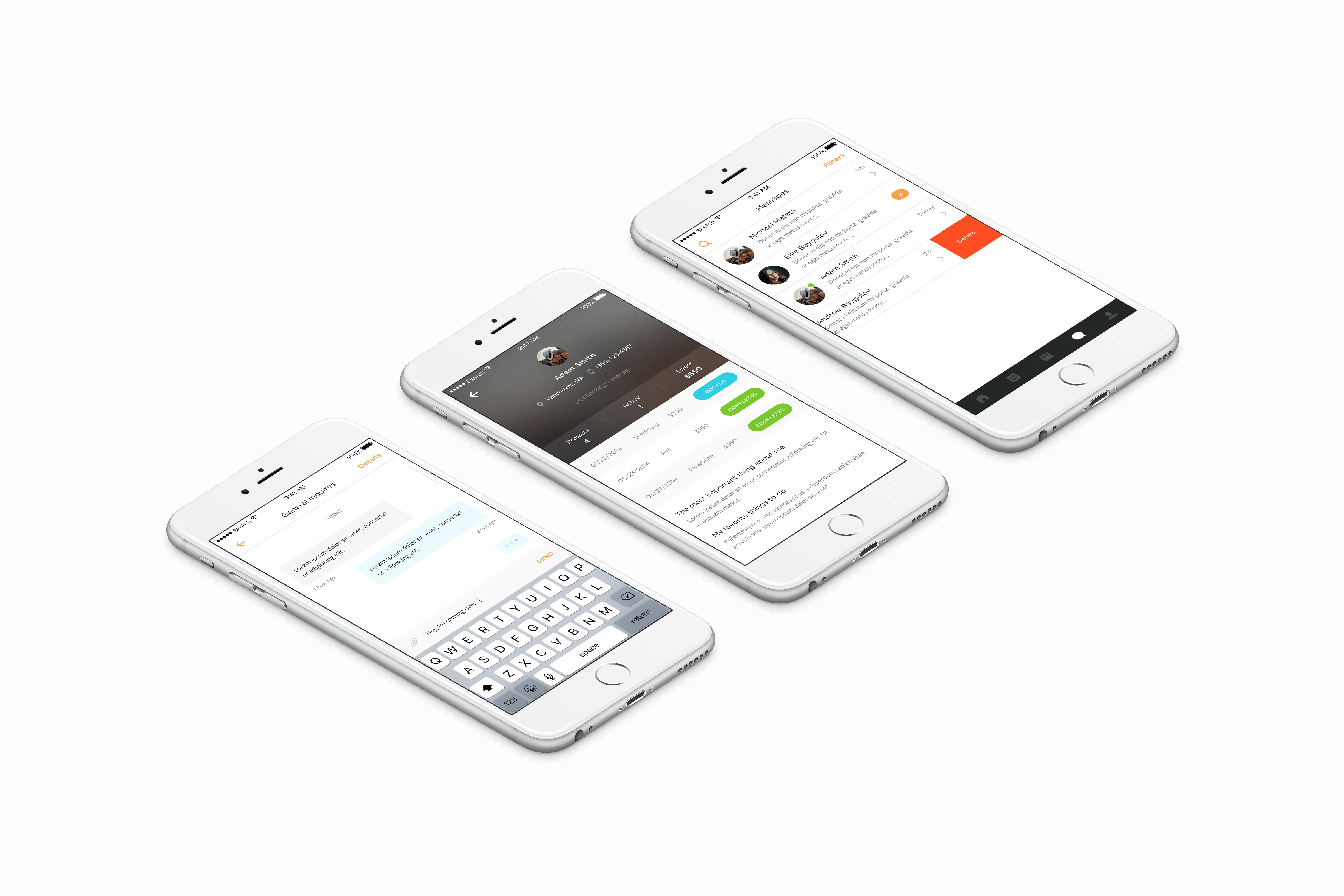When we approached the challenge of building photographer/client communication we immediately knew that the traditional contact form would not work for us.
Think about it. When was the last time you filled a contact form like the one you’re asking your clients to use on your website?
Here’s the challenge of using contact forms:
1. They feel impersonal. The photography industry is highly relational and profoundly personal. Unlike many other professions, photographers are eager to develop meaningful relationships with their clients and depend on these relationships for referrals. This is why it is not uncommon for photographers to interact with their clients via Facebook Messenger, Instagram Chat, text and phone calls. Professional boundaries are blurred by the accessibility of personal interactions.
But traditional contact forms stand in stark contrast to this experience. They feel cold, impersonal, and distant. It’s like you’re submitting a technical support query to Samsung that your battery has recently detonated. You’re not sure if anyone will even read your submission, let alone respond.

2. They feel slow. We live in an age of instant gratification. Everyone knows this and merchants who are able to cater to impulsive consumers are most profitable. For example, when Amazon added One-Click Payments, they increased their revenue by $2.4 Billion! Fun fact: They actually own this patent and are licensing it out to companies like Apple. Fortunately for Apple, the patent expires this year.
What is clear, is that consumers are growing adapt to either making a purchase decision immediately or simply moving on.
Now consider how a traditional photography website contact form fits into this context. It feels slow at best. Whenever I fill out a contact form online, I feel a 50% chance that no one will write back and only a 5% chance that I will hear back within a few hours. I don’t know about you, but I rarely make purchase decisions this way. When I decide I need something, I find the best available solution, I buy it and move on. Perhaps you have noticed this in your photography business, where many clients would rather use Facebook or Instagram messenger instead of using your website contact form.
Let’s be honest, the contact form is quickly becoming a thing of the past.

3. They feel out of place. My guess is that 95% of the time, contact forms are used for support inquiries. Web users have become accustomed to thinking of contact forms in the context of product issues and broken experiences. In short, they carry an adverse connotation in the mind of an average online consumer. But the issue isn’t that contact forms are being used, it’s that they are used as a lead generator and are part of a purchase experience. There is simply too much working against it.
4. They feel ugly. To date, I have looked through thousands of photographer websites and only a small fraction of their contact forms felt pleasant and consistent with the website. In almost every case, it’s a WordPress plugin which has limited styling functionality that invades your carefully designed website as an out-of-place-but-necessary evil.
Furthermore, WordPress is notorious for breaking contact forms. Somehow their updates are constantly disrupting the contact forms and rendering them useless without any notification. As a result, you’re constantly having to test it, just to make sure that it’s still working.
5. The feel intimidating. Many of your website visitors have simple questions, but they aren’t ready for the formal conversation your contact form assumes. The form assumes that your website visitor has mostly made up their minds about booking you. But oftentimes they’re not sure, so they leave without having their questions answered.

So what are we doing different with Bloom?
Bloom photographer/client communication is built around a website messenger which is designed to feel like a chat module. This chat module is activated when a new visitor lands on your web page inviting the visitor into a simple conversation. The form of communication is pleasant, personal and un-intimidating.

Of course, their basic information is gathered and you are equipped one more good lead, even if you don’t have time to chat with them at the moment.
You can chat with your visitors from your desktop web application, but the easiest solution is to simply respond using your mobile app. All of your conversations are available on your app, wherever you are. So you can even answer questions when you’re waiting in line at the grocery store. Of course, if you’re not available, your visitor will simply be notified that you’ll write them back at your earliest convenience.
 Communication is just one of the benefits of bringing all photography business components under one roof! At Bloom, we are developing a truly modern and cutting-edge platform to ensure that your business is taking advantage of the same powerful tools available to large corporations. Bloom is here to take your photography business to a new level.
Communication is just one of the benefits of bringing all photography business components under one roof! At Bloom, we are developing a truly modern and cutting-edge platform to ensure that your business is taking advantage of the same powerful tools available to large corporations. Bloom is here to take your photography business to a new level.
Stay tuned to hear more about when we will be opening Beta.